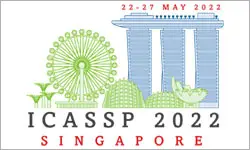Image Restoration via Reconciliation of Group Sparsity and Low-Rank Models
Zhiyuan Zha, Bihan Wen, Xin Yuan, Jiantao Zhou, Ce Zhu
-
Members: FreeSPS
IEEE Members: $11.00
Non-members: $15.00Length: 00:10:08
12 May 2022
Image nonlocal self-similarity (NSS) property has been widely exploited via various sparsity models such as joint sparsity (JS) and group sparse coding (GSC). However, the existing NSS-based sparsity models are either too restrictive, e.g., JS enforces the sparse codes to share the same support, or too general, e.g., GSC imposes only plain sparsity on the group coefficients, which limit their effectiveness for modeling real images. In this paper, we propose a novel NSS-based sparsity model, namely, low-rank regularized group sparse coding (LR-GSC), to bridge the gap between the popular GSC and JS. The proposed LR-GSC model simultaneously exploits the sparsity and low-rankness of the dictionary-domain coefficients for each group of similar patches. An alternating minimization with an adaptive adjusted parameter strategy is developed to solve the proposed optimization problem for different image restoration tasks, including image denoising, image deblocking, image inpainting, and image compressive sensing. Extensive experimental results demonstrate that the proposed LR-GSC algorithm outperforms many popular or state-of-the-art methods in terms of objective and perceptual metrics.



